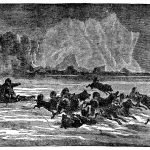David Schleich, PhD
Such debates as the dominance of the scientific medicine model in professional medical preparation or philosophical considerations of Newman’s ideal university (Newman, 1873; Cameron, 1978; Pelikan, 1992) lie along the continuum where naturopathic medicine and the field of higher education intersect. There is an exquisite sonata of scholarship about the “idea of a university” (Newman, 1873; Flexner, 1930; Jasper, 1960; Frye, 1971; Jones, 1997; Clark, 1983; Scott, 1984; Williams, 1992; Tierney, 1994) that is still embedded enough in the popular consciousness about what a post-secondary educational institution should be that many of the trappings of those institutions quickly became part of our early college leaders’ decisions about how to structure our schools.
Important in a practical sense for understanding the development of our colleges and programs within universities are the following areas, drawn selectively from the large and diverse body of literature about the nature of higher education:
- development and purposes of the university
- financing of higher education
- characteristics of higher education
- nature and form of medical education
- post-secondary education private and for-profit sectors.
Let us begin with the first area of focus, getting a handle on the development and purposes of the university as a key institution in civil society, the logical place for our naturopathic medical professional programs to gravitate toward.
Development and Purposes of the University
Accounting for the consistent presence of university status or affiliation goals in our colleges’ early planning documents and record of action is made easier by considering the literature about the role and function of the university as an institution in civil society. For example, James Traub (1997) makes the point that the traditional university “occupies a space that is both bounded and pastoral – a space that speaks of monastic origins and commitment to unworldliness” (p. 20). There are loud echoes of this tradition in the debates and conversations that have occurred over the years at many of our colleges. Whereas one voice might call for constant attention to currency in the field, other voices may call for a return to intuition and a tradition of respect for a natural world, where the clinical pearls of our elders are as important as science-based medicine. On balance, however, these voices wanted our graduates to be part of a credible higher education system preparing NDs for regulated, highly valued careers in medicine. Even so, data reveal that early college leaders were not always clear about where their schools might land in the broader canvas of university institutional systems.
Bringing context to this ongoing discussion within those early college communities, the literature of higher education is abundant on topics such as the development and purposes of the university (Cameron, 1978; Jasper, 1960; Frye, 1959, 1971; Gasset, 1944; Pelikan, 1992; Whitehead, 1967; Jones, 1997; Konrad and McNeal, 1984; Scott, 1984). Duderstadt summarizes its purposes as follows:
- the maturation of students and their formal education in the traditional academic disciplines and professional fields
- scholarship
- service to society
- leadership for society
- the source of intellectual capital (Duderstadt, 2000, pp. 39-40).
Before and after they opened its doors, the founders of our various college programs and schools discussed at great length what form the institution should take, or where in an existing institution the program should reside. That is, would they find a location within the academy and emulate the professional medical faculties of the university, or would they resolve long term into standalone professional schools outside the higher education terrain? In response to these fundamental questions, the literature is generous. In its treatment of issues related to the role of the university as an institution in modern times, whether in responding to the education and training needs of North American society; to the research demands of the country’s transforming, knowledge-based economy; to criticism about the faltering quality of higher education institutional performance; or to the transforming nature of the various states and provinces’ post-secondary universe (Bloom, 1987; Sykes, 1988, 1989; Shaw, 1989; Kimball, 1990; Anderson, 1992; Skolnik, 1997; Jones, 1997; Duderstadt, 2000), there is no shortage of analysis nor of prognosis.
Certainly, the leaders of the colleges in the 1970s through the 1990s concentrated repeatedly in the various stages of their development on the tug between medical career education and the broader goals of structuring the program and its teachers for a university context where scholarship and research played key roles. Important grounding for this tug of war is our understanding that a wide range of post-secondary players assembled during this period not only on the public side into an orderly binary structure, but also on the private side into a diverse, crowded sector.
Scholars trace the larger history of higher education (Brubacher, 1965, 1977), representing it as a “system” (Clark, 1983). As Brubacher, for example, moves from landmark to landmark in that loosely affiliated system, his survey of the history of higher education reinforces understanding of its purposes (transmitting recondite experience from one generation to the next, critically evaluating the state of existing knowledge and exploring new frontiers of learning). To these, Duderstadt contributes his list of purposes for the university, cited above, and Ruch (2001) adds the “time-honored, laudable ideals – shared governance, the life of the mind, learning for its own sake” (p. 23). For our schools there was a concomitant eagerness to understand how to access the world of higher education while at the same time not losing the identity and roots of the codified knowledge of nature cure from which the colleges sprang.
Next month we will continue to explore these formative influences on the colleges’ earlier leaders on deciding where our programs would find safe harbor in the volatile world of higher education in North America.
 David Schleich, PhD is president and CEO of NCNM, former president of Truestar Health, and former CEO and president of CCNM, where he served from 1996 to 2003. Other previous posts have included appointments as vice president academic of Niagara College, and administrative and teaching positions at St. Lawrence College, Swinburne University (Australia) and the University of Alberta. His academic credentials have been earned from the University of Western Ontario (BA), the University of Alberta (MA), Queen’s University (BEd) and the University of Toronto (PhD).
David Schleich, PhD is president and CEO of NCNM, former president of Truestar Health, and former CEO and president of CCNM, where he served from 1996 to 2003. Other previous posts have included appointments as vice president academic of Niagara College, and administrative and teaching positions at St. Lawrence College, Swinburne University (Australia) and the University of Alberta. His academic credentials have been earned from the University of Western Ontario (BA), the University of Alberta (MA), Queen’s University (BEd) and the University of Toronto (PhD).
REFERENCES
Anderson M: Imposters in the Temple: American Intellectuals Are Destroying Our Universities and Cheating Our Students of Their Future. New York, 1992, Simon and Schuster.
Bloom A: The Closing of the American Mind: How Higher Education Has Failed Democracy and Impoverished the Souls of Today’s Students. New York, 1987, Simon and Schuster.
Brubacher JS: Basis for Policy in Higher Education. New York, 1965, McGraw-Hill.
Brubacher JS: On the Philosophy of Higher Education. San Francisco, 1977, Jossey-Bass.
Cameron James M: On the Idea of the University. Toronto, 1978, University of Toronto Press.
Clark Burton R: Values in Higher Education: Conflict and Accommodation. Tucson, 1983, Center for the Study of Higher Education.
Clark Burton R: The Higher Education System: Academic Organization In Cross-National Perspective. Berkeley, 1983, University of California Press.
Duderstadt JJ: A University for the 21st Century. Ann Arbor, 2000, The University of Michigan Press.
Flexner Abraham: Universities: American, English, German. New York, 1968 (originally published in 1930), Oxford University Press, pp 3-36.
Frye Northrop: By Liberal Things. Toronto, 1959, Clarke, Irwin.
Frye Northrop: The definition of a university. In Bruce Rusk (ed), Alternatives in Education. OISE Fifth Anniversary Lectures, Toronto, 1971, General Publishing Co., pp 71-90.
Gasset Jose Ortega Y: Mission of the University. Princeton, 1944, Princeton University Press.
Jasper Karl: The Idea of the University. London, 1960 (first published in German – Die Idee der Universitat – Berlin, 1923), Peter Owen.
Jones GA: Higher education in Ontario. In GA Jones (ed), Higher Education in Canada: Different Systems, Different Perspectives. New York, 1997, Garland, pp 135-157.
Jones GA: Research on higher education in a decentralized academic system: the case of Canada. In J Sadlak and PG Altbach (eds), Higher Education Research at the Turn of the New Century: Structures, Issues and Trends. New York, 1997, Garland.
Kimball Roger: Tenured Radicals: How Politics Has Corrupted Our Higher Education. New York, 1990, Harper and Row.
Konrad Abram and McNeal Joanne: Goals in Canadian universities, Canadian Journal of Higher Education IV(1):31-40, 1984.
Newman John Henry: The Idea of a University. Oxford, 1976 (originally published in 1873), Clarendon Press, pp 124-155.
Pelikan J: The Idea of a University: A Reexamination. New Haven, 1992, Yale University Press.
Ruch Richard S: Higher Ed, Inc.: The Rise of the For-Profit University. Baltimore, 2001, Johns Hopkins University Press.
Scott Peter: The Crisis of the University. London, 1984, Groom Helm.
Shaw Peter: The War Against the Intellect: Episodes in the Decline of Discourse. Iowa City, 1989, University of Iowa Press.
Skolnik Michael L: Balancing drift and design: Ontario universities need firmer direction, CSSE News 24(1):10-11 (reprinted from The University of Toronto Bulletin), February 1997.
Sykes Charles J: Profscam: Professors and the Demise of Higher Education. New York, 1988, Kampmann.
Sykes Charles J: The Hollow Men: Politics and Corruption in Higher Education. Washington, 1989, Regnery Gateway.
Tierney William: Cultural citizenship and educational democracy. In William Tierney (ed), Building Communities of Difference: Higher Education in the Twenty-First Century. Westport, 1994, Bergin & Garvey, pp 127-158.
Traub James: Drive-thru U: higher education for people who mean business, New Yorker, 20 and 27 October, 1997.
Whitehead Alfred North: The Aims of Education and Other Essays. New York, 1967 (first published in 1929), The Free Press.
Williams G: Higher education and society. In Burton Clark and Guy Neave (eds), The Encyclopedia of Higher Education, Volume 2. Oxford, 1992, Pergamon Press, pp 841-851.





